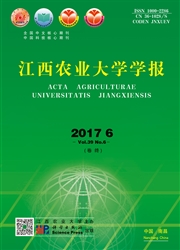

 中文摘要:
中文摘要:
景观格局变化是景观生态学的基础性核心内容,是全球环境变化研究领域的热点。在RS和GIS技术的支持下,利用1998年Landsat5 TM和2013年Landsat8 OLI/TIRS数据,对辽宁省沿海地区的景观类型进行了分类,选取有明确生态意义的10种景观特征指数,计算Kappa指数,分析了景观格局变化及其驱动力因子。结果表明:近15年来,辽宁省沿海地区各种土地利用类型的总面积在保持相对稳定的基础上略有扩张,各种土地利用类型间的空间转化较大,即景观空间格局发生了显著的变化,且景观优势度降低,多样性增加。自然地理条件因素、人口增长的压力、经济的飞跃发展和政府政策的指引调控是导致辽宁沿海地区景观区域差异及格局变化的主要驱动力。沿海地区是陆地生态系统和海洋生态系统的交错带,其生态环境比较敏感脆弱,政策的支持和经济的发展全方位的扩大了辽宁对外开放的崭新格局,这必将对该地区的景观格局产生较大影响,因此,在未来的城市规划发展中要提高人们生态保护的意识和观念,着重加强沿海地区的生态保护和管理,进一步协调好辽宁沿海地区土地利用的经济效益、社会效益与生态效益的关系。
 英文摘要:
英文摘要:
Landscape pattern change is not only the basic core research extent in landscape ecology,but also a hotspot in the field of the global environmental change. In this paper,the landscape types of the coastal areas in Liaoning Province were classified using Landsat5 TM data in 1998 and Landsat8 OLI / TIRS data in2013 with the support of Remote Sensing( RS) and Geographic Information System( GIS) and the changes in landscape patterns and the driving force factors were analyzed based on 10 landscape metrics. The results showed that: during last 15 years,the total area of coastal areas in Liaoning had a slight trend of expansion;meantime a large spatial transformation occured between various land use types,in other words,the spatial pattern of landscape changed significantly. The landscape dominance decreased and the diversity increased. It was caused by the main driving forces of natural geography condition,population increase,economic development and government policy that induced the regional discrepancy and changes of landscape patterns in Liaoning coastal areas. The coastal area is located between terrestrial ecosystem and marine ecosystem,and its ecological environment is vulnerable. Goverment policies and economic development promote Liaoning's opening to the outside world,which affects the landscape pattern in this area. Thus,people should improve their ecological protection consciousness and focus on strengthening ecological protection and management of coastal areas in Liaoning Province.
 同期刊论文项目
同期刊论文项目
 同项目期刊论文
同项目期刊论文
 期刊信息
期刊信息
